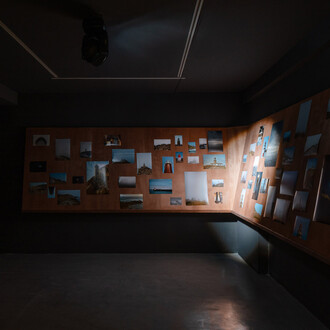Galería Elvira González is pleased to present the exhibition Calder. Gouaches, the gallery’s second solo exhibition dedicated to the American artist. The show brings together a careful selection of gouaches on paper, many of which are on public view for the first time.
While best known for his mobiles, stabiles, and monumental sculptures, Calder (1898–1976) trained as a painter when he moved to New York City in 1923 to become an artist. Several years later, his first truly abstract works of art were a series of small oil paintings made in the wake of a transformative visit to Piet Mondrian’s studio in October 1930. Calder was deeply impressed by the spatial dynamics of the studio, writing later that the visit “gave me a shock that started things..."
Calder familiarized himself with gouache techniques in the thirties, but it was not until the mid- forties that the medium became a key element of his practice. As Jean Lipman explained in her well- known publication Calder’s Universe, these types of “opaque watercolors [were] better suited to his temperament than either transparent watercolors (too pale) or oils (too slow)”. Calder gradually set aside his work with oil to focus on this technique, which suited his “high-spirited, rapid, spontaneous expression.”
In the fifties, the Calder spent eight months in Aix- en-Provence, France, where he lived in two different houses with his family. In each, Calder installed a makeshift studio dedicated to his work with gouache, a medium that he began to cultivate. “I had made gouaches before, but here I was practically doing nothing but gouaches and concentrating on them,” he wrote in his autobiography. “I seemed to develop something new.”
This exhibition focuses on Calder’s particular vision, which was lively, dynamic, and colourful, but also rigorous and transgressive. Through the gouaches we can understand, for the fast-speed they allowed, his most spontaneous creative channels; these works often inspired and responded to his large-scale and sculptural production.
Alexander Calder. Gouaches coincides in time with two major exhibitions in Spain that feature the artist: Calder Stories at Centro Botín, Santander, and Calder-Picasso at the Museo Picasso, Málaga.
Alexander Calder (Pensilvania, 1898 - Nueva York, 1976) utilized his innovative genius to profoundly change the course of modern art. Born in a family of celebrated, though more classically trained artists, he began by developing a new method of sculpting: by bending and twisting wire, he essentially "drew" three-dimensional figures in space. He is renowned for the invention of the mobile, whose suspended, abstract elements move and balance in changing harmony. Coined by Marcel Duchamp in 1931, the word mobile refers to both “motion” and “motive” in French. The earliest mobiles moved by a system of motors, although these mechanics were virtually abandoned as Calder developed mobiles that responded to air currents, light, humidity, and human interaction. He also created stationary abstract works that Jean Arp dubbed stabiles.
From the 1950s onward, Calder turned his attention to international commissions and increasingly devoted himself to making outdoor sculpture on a grand scale from bolted steel plate. Some of these major commissions include: 125, for the New York Port Authority in John F. Kennedy Airport (1957); Spirale, for UNESCO in Paris (1958); Teodelapio, for the city of Spoleto, Italy (1962); Trois Disques, for the Expo in Montreal (1967); El Sol Rojo, for the Olympic Games in Mexico City (1968); La Grande Vitesse, which was the first public art work to be funded by the National Endowment for the Arts (NEA), for the city of Grand Rapids, Michigan (1969); and Flamingo, for the General Services Administration in Chicago (1973).
















